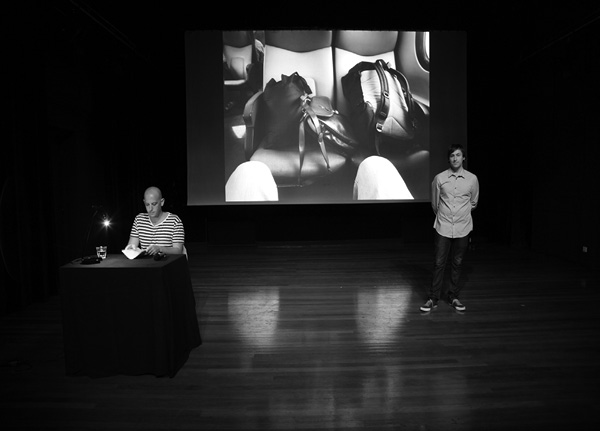
THE MIRROR STAGE
first performed on
September 11, 2011
de Brakke Grond, Amsterdam, Netherlands
performed once in 2011
OHAD BEN SHIMON
The Hague, Netherlands
631601728s631601728h631601728i631601728m631601728i631601728s631601728u631601728n631601728s631601728h631601728i631601728n631601728e631601728@631601728g631601728m631601728a631601728i631601728l631601728.631601728c631601728o631601728m
ohadbenshimon.com
THE MIRROR STAGE
OHAD BEN SHIMON
To be honest I am no expert in Lacan, nor in what he had to say about the Mirror Stage. I only have a few associations on the relation between Lacan’s conception of how an infant comes to identify its own self-image in the mirror and a public or audience who comes to see a show or performance in a theater space.
Somewhere between the (im)age of six and 18 months, a little child will at some point look in a mirror and recognize that what is reflected in it is his or her own self-image.
To most child developmental psychologists this marks a point at which the human being, for the first time in his or her life, becomes aware of its own subjectivity. As the infant is busy developing a strong and stable human body, it experiences this body as not yet complete and very much dependent on the care and support of its parents. It misses a complete and wholesome image and as a result the infant has a general fragmented experience of its own body. Yet when the infant looks in the mirror, that self-image is experienced as a whole. A public that comes to see a performance is made out of different individuals. It experiences itself as fragmented. And yet at the same time, the public as a whole, is focused on the space of the stage and whatever is happening on it. Just as the mirror reflects back to the infant a sense of unity so too should a good performance reflect a sense of unity to the public.
In my performance “The Mirror Stage,” I attempted to present a coherent narrative construction which includes the audience as active participants in the unfolding of events. The form of the narrative was “autobiographical,” depicting me as the leading “actor” in the course of events leading up to the performance within the context of a Photography & Performance Festival. Familiar references include Spalding Gray, Vito Acconci, and others.